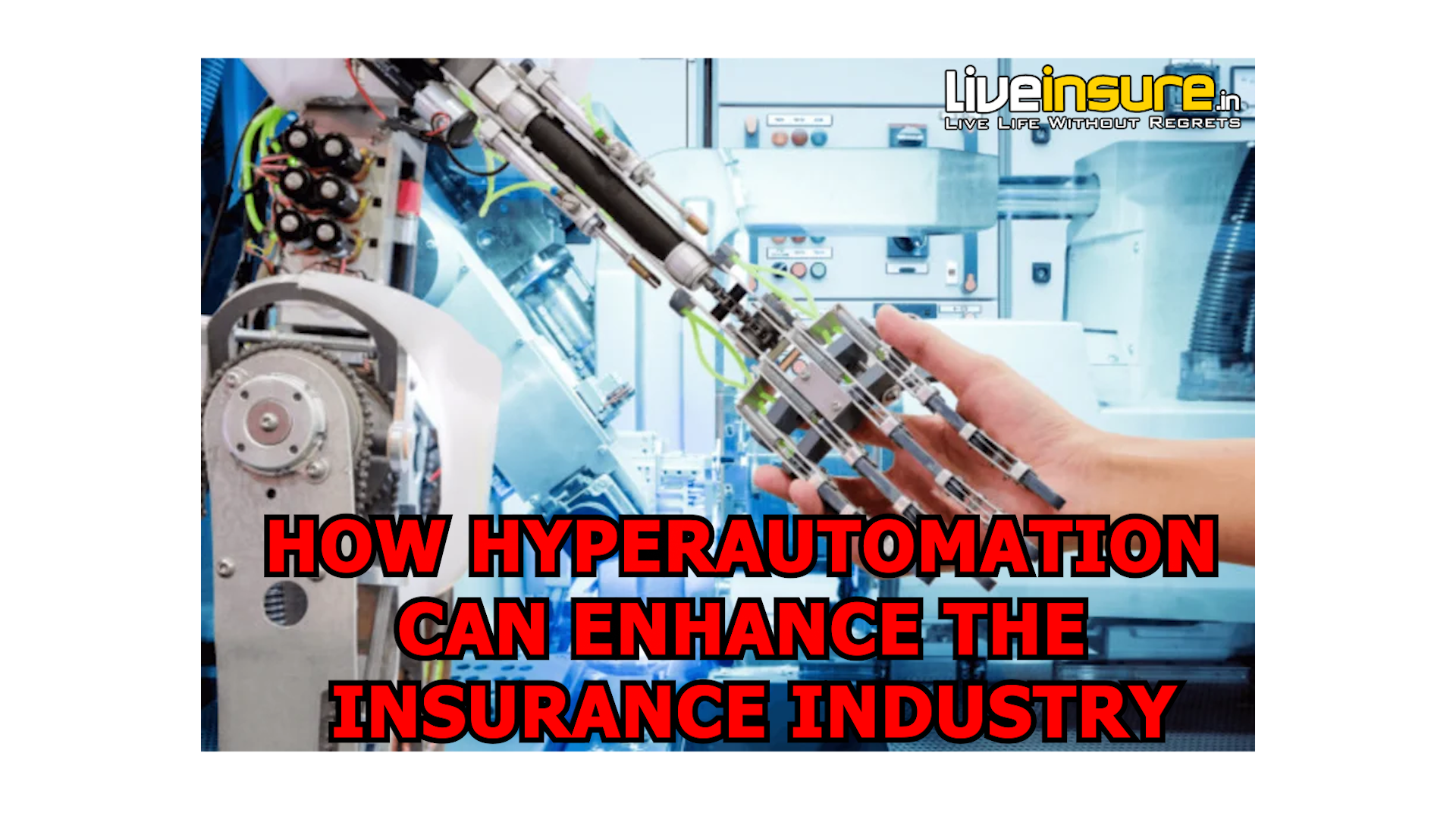The traditional insurance industry faces increased pressure from insurtech companies due to the new capabilities they are bringing to the market. 61% of insurers say their top concern about insurtechs is changing customer expectations. This concern is well-founded as 41% of consumers are likely to change their insurers due to a lack of digital capabilities.
In response, insurance companies are speeding up their digital initiatives and the COVID-19 pandemic has been a catalyst for this transformation. The next step in digital transformation is hyperautomation: combining traditional automation technologies such as RPA with intelligent technologies such as AI, process mining, or chatbots to automate as many business processes as possible. According to Gartner, hyperautomation is inevitable and is quickly becoming a condition of survival rather than an option for businesses.
Claims Processing:
Insurance claims processing takes a lot of time since the agents must review data from various sources in various formats, sort them and verify the same. This usually takes a few days, and sometimes there are instances of data mismatches.
Hyper automation could transform claims processing and significantly reduce the manual effort thereby ending the possibility of errors. When a claim is made, the intelligent bots will review the data and verify if the data is complete and legitimate and then the claim gets approved. If not, the data is forwarded for manual processing.
Further, hyper-automation can reduce human interaction by automatically sending out the claim details to the customer.
Policy Management:
Before the formal issuance of the policy, a lot of documentation was involved. The agent must manage all the necessary documents, compare them and communicate with the customer and update all the data on the internal system.
Whenever a customer makes a change in the policy or any of his details, a huge manual process must be done to make the necessary changes.
Hyper automation can eliminate all this manual work by letting machines learn through various sources like call transcripts and emails and getting adapted to the changes on their own.
With Intelligent Document Processing, intelligent bots can extract, sort, and create reports of all the data without human interference. This would reduce manual work and lead to faster processing. This would also let the system send out the updated policy details to the customer automatically.
Regulatory Compliance:
Compliance breaches are known to take place from time to time in insurance industries, this is because the process of complying with various regulations requires more time. Any changes to the amendments have led to a huge process of restructuring. This process, when done manually, leads to several errors which could result in huge losses.
Automation of regulatory compliance could reduce the manual effort to a significant degree. Dynamic templates could be customized to apply in response to compliance rules.
Hyper-automation lets the system maintain the records of all the changes to the regulations by tracking the environment and thereby making necessary adjustments to meet the mandatory compliance requirements. This will make sure that there is no scope for error.
Underwriting:
Underwriting is a process where all the data is collected from the applicant to calculate the risks associated with any given policy. The data is reviewed and analyzed deliberately before making any decision. This is a time-consuming process that could be handled in no time by Hyper automation.
Hyper automation allows the bots to collect all the key data from multiple systems to come up with the coverage data and create reports on the claim volumes. Hyper automation makes the collection of data from various sites and accessing it to generate the risk factor an easy and quick task. The system is smart enough to compare a huge volume of data to analyze the risk factor of any given customer.
Insurance policy pricing:
For an insurer to offer the right insurance with the right pricing for a customer, requires going through the customer’s risk profile by reviewing their health profile, test results, biometrics, etc. All these are the factors considered while deciding the price for an insurance policy. This could take days when done manually, but Hyper automation eases the process.
The pricing systems will be empowered with AI, which can change and modify the policy according to the needs of the customer. It would set necessary parameters to calculate the pricing for any policy based on the cost of implementation, sales profile, and added gains.
Improving customer experience
Top-notch customer experience is what keeps any company thriving. Many sub-processes in the Insurance customer experience process can be automated to allow better and faster resolution of the problems.
When any kind of request is made by a customer, the insurance provider has to go through huge piles of data to come up with a solution but with Hyper automation, whenever a request is made, the bot collects all the important information from various systems and processes the customer requests and further deals with it.
The bots can read through the data and interpret it to come up with a smart solution. This means that all kinds of complicated requests could be addressed in minutes without having to stand in long queues.
Claim Fraud detection:
Insurance fraud detection is a tough nut to crack. False claims have been increasing a lot lately due to the number of benefits claimers could get through the insurers.
Detecting these is difficult for a human as these fraudsters are much technologically advanced, but with the help of Hyper automation, all the claims are subjected to automatic screening, which will detect any kind of anomalies by going through a large volume of data.
Whenever a claim is made thorough research must be done on its background. The bots can scan through multiple platforms to look for any tricky behavior and can easily detect if there is a fraud claim, which is difficult through manual work.
Hyper automation enables the system to read through all the data related to a particular claim and this helps in reducing any chances of fraud.
Personalized policies:
Everyone has different needs with their insurance policies, any company cannot get many customers by providing the same policies for every individual. The demand for personalized services is growing each day.
With Hyper automation practices, insurers can allow customer to customize their policies in a way that they only pay for the coverage they need.
The entire process of selecting a policy could be automated. This would help customers in making clever decisions while abiding by the rules set by the insurer. The system could review the customer data and come up with suitable policies for every individual, ensuring the customer pays only for what they want to be covered.
Document Ingestion:
Insurance companies hold large volumes of documents. These documents are procured from various sources which have data in various formats. Now the challenge with this is that when each of these documents is manually studied and understood it would take a very long time.
Document ingestion was one of the first benefits of automation, now this has evolved and includes tools that could read these documents and understand and even predict outcomes through them.
With Hyper automation, insurers can easily get the data extracted, sorted, and interpreted. These smart tools understand the context of the documents through smart learning. This means that the provider can get data to address any query quickly and accurately.
Data Segregation:
Huge volumes of data are collected from each customer by insurance companies. All this data is collected in various formats and it must be sorted into simpler formats.
Hyper automation helps to process them and gets this tough task done in little to no time. The additional predictive analytics tools help the provider to understand the data better by sorting the data from multiple sites and generating reports of the same.
Concluding Thoughts
The insurance industry has undergone a revolution thanks to automation, and hyperautomation is ready to take it to the next level of productivity. Additionally, it gets insurers ready for the new era of linked experiences, which is expected to be a major trend in the coming years. The improved goods and services that result from this will lower operating costs, lessen risks and significantly improve customer satisfaction. As a result, the implementation of hyperautomation in insurance is sure to bring a rapid ascent toward success.




